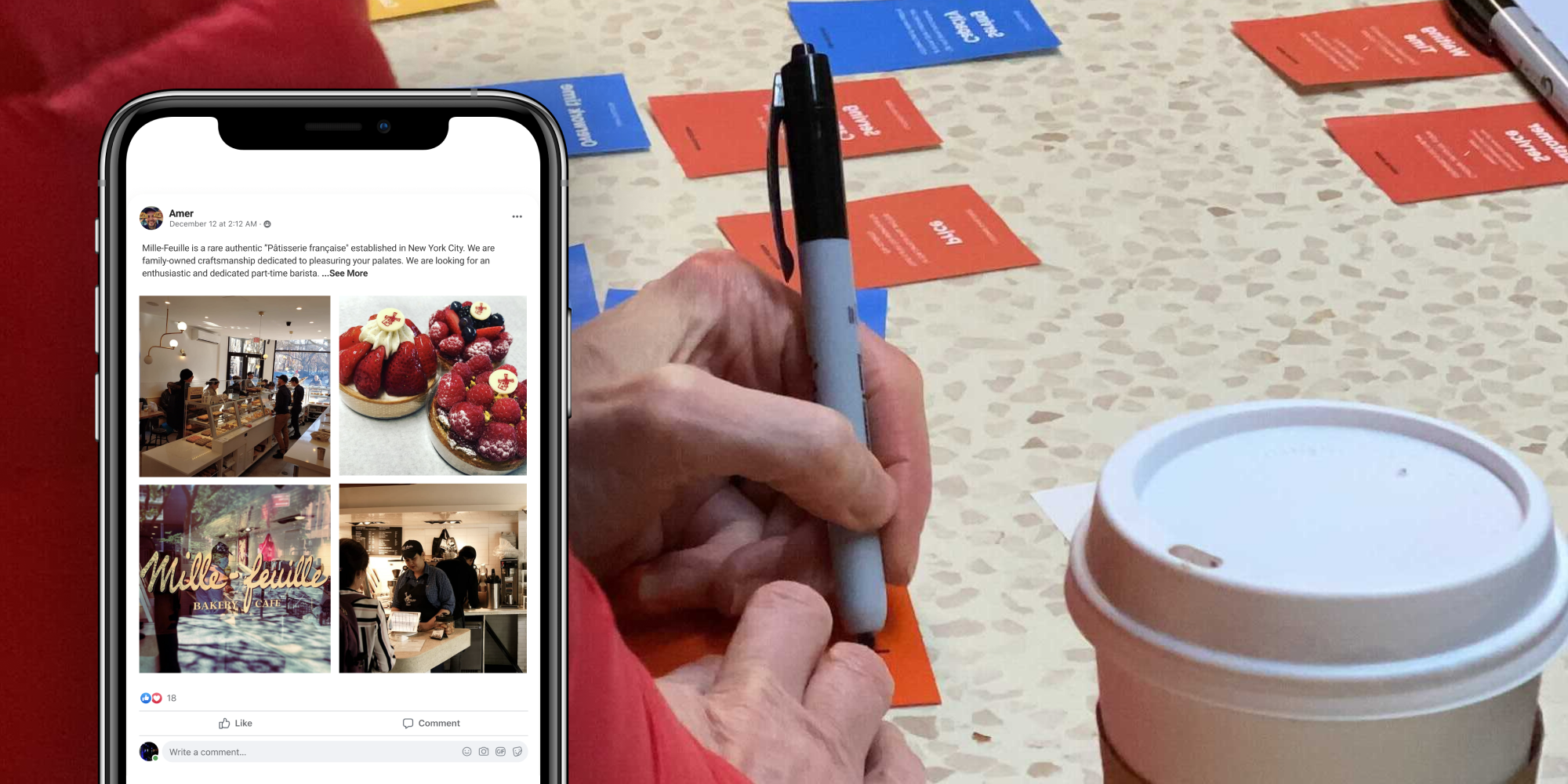
Mille Feuille, a small boutique French bakery in Greenwich, NYC, was facing a very peculiar problem: the bakery was struggling to serve customers on time. We used design thinking method to uncover reasons and proposed a hiring strategy that took into account their location.
To being our process, we asked the user to map their journey from start to finish. This allowed user to get into the right mind frame of the problem and explore their emotions associated with each step they took.
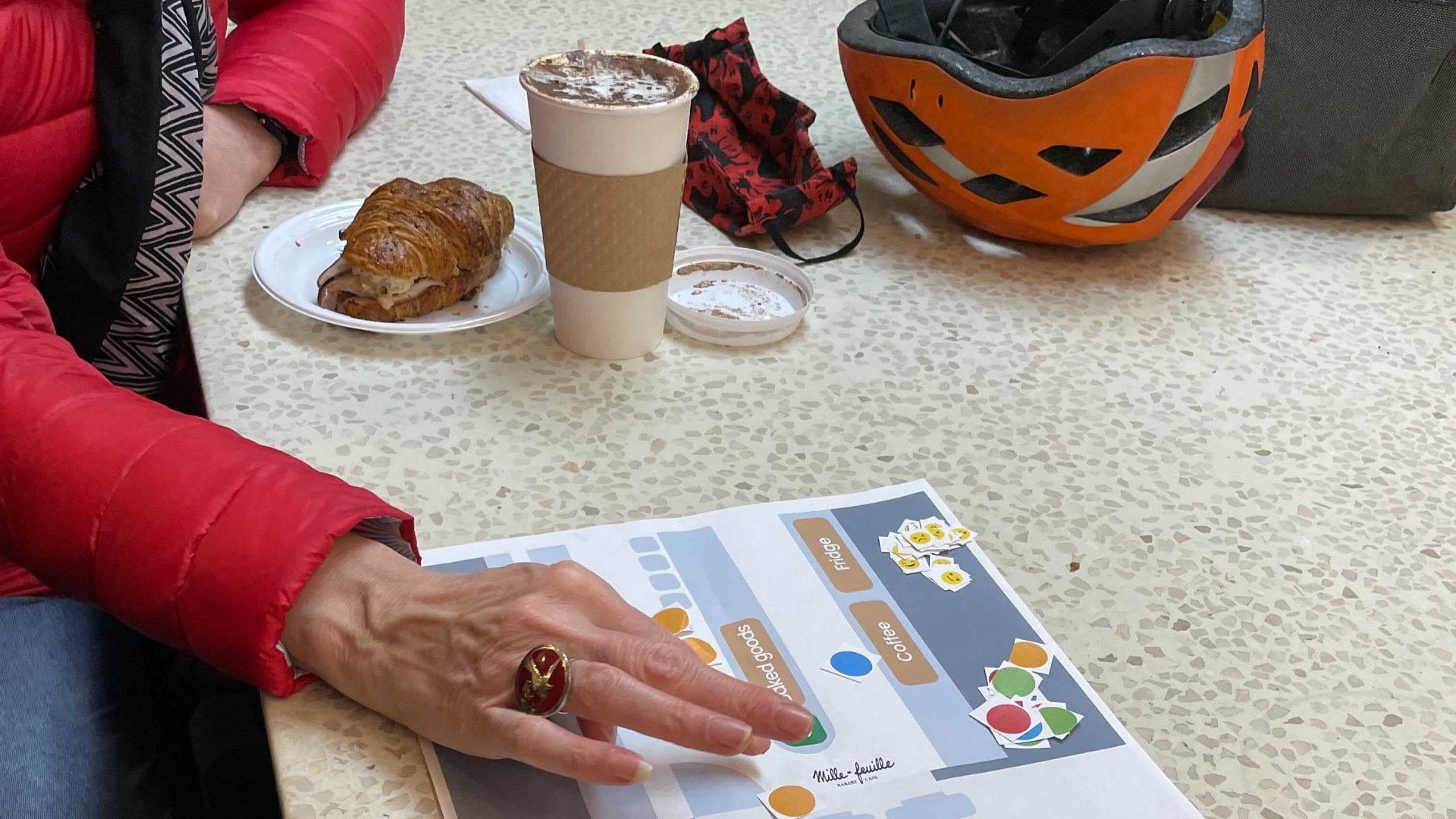
Next, we prepared challenge cards which involved challenges faced by customers, stakeholders, and the staff. Users were asked to pick the most important three challenges they face. Then we brainstormed ideas to address those challenges.
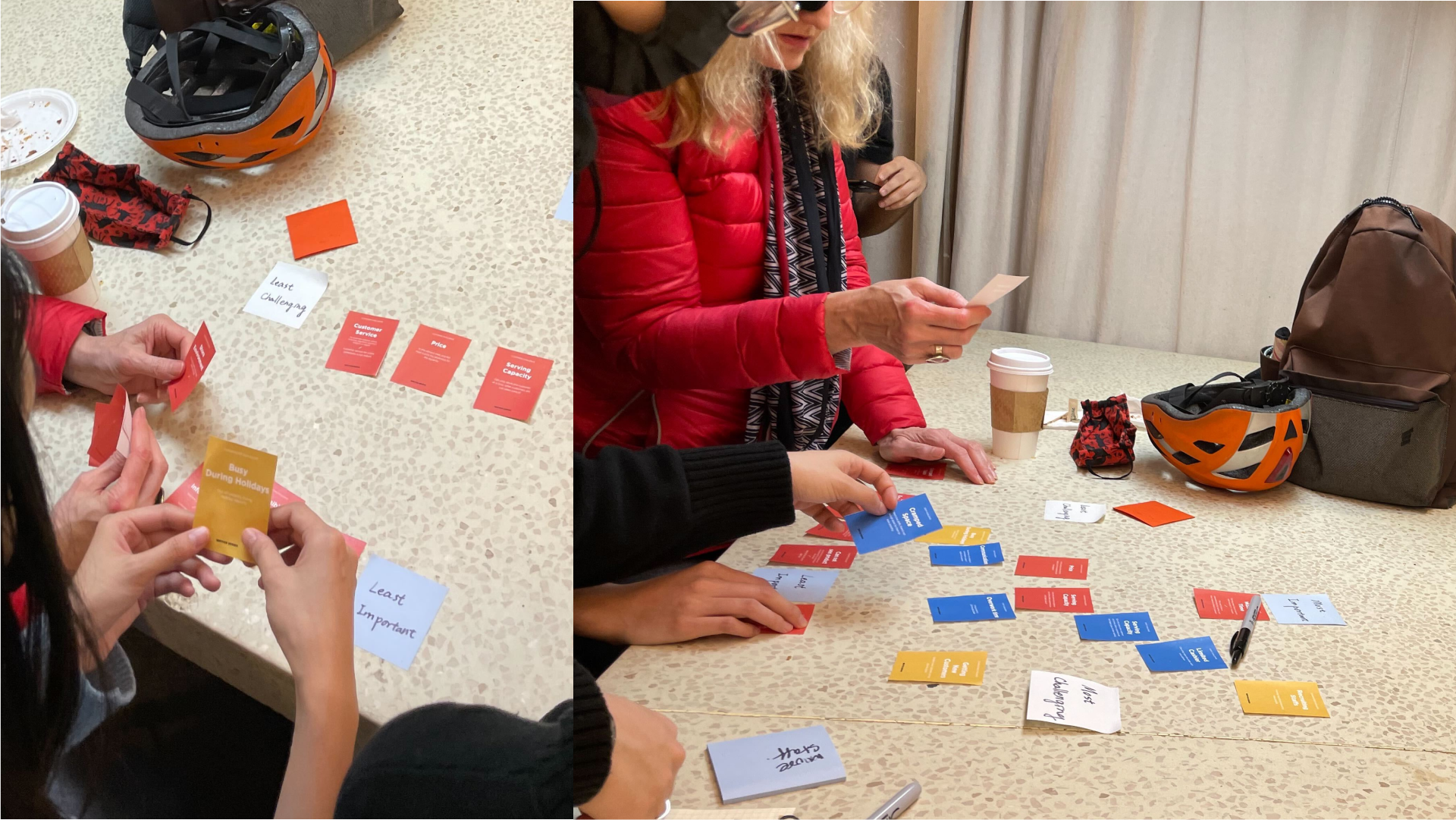
As a result of codesigning with customers and the staff, we were able to identify three key challenges: waiting times, customer service, and reduced serving capacity due to the pandemic. Through brainstorming solutions, we also discovered that the customers highly preferred analogue solutions compared to digital ones.
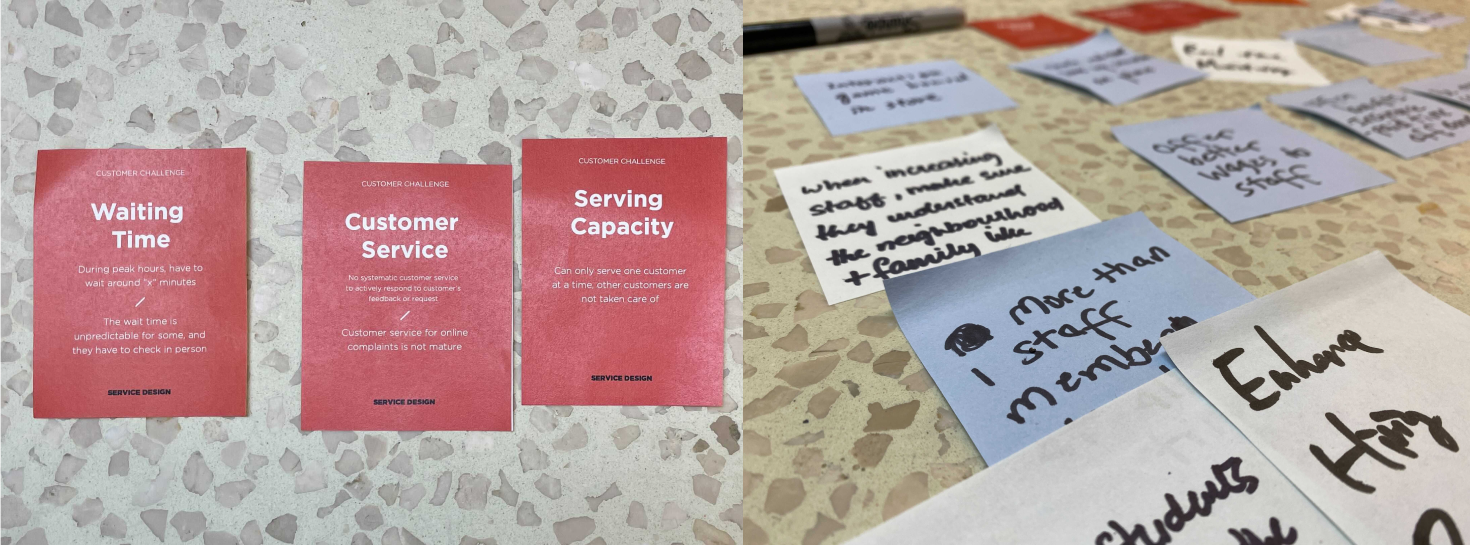
During our research, we stumbled upon several students as the bakery was in the vicinity of the New York University. We interviewed NYU students and our main question was: "would you like to work part-time for a bakery nearby?" The answer was an overwhelming yes! So we went deeper into our specific staffing pool.
Based on the rush-hours as recorded on Google Maps, we recommended hiring three part-time students who are required to be available during the rush hour, 10AM - 2PM. These students will be a support to the main staff, reducing serving time to 10 minutes from 15 minutes.

Shifting the hiring strategy from job boards to NYU's student job boards on Facebook since the students trust that source the most. We helped with content management strategies which would relate to college students more.

Through the proposed solution, we are expecting the business to reduce serving time from 15 minutes to 10 minutes. This allows the business to serve more customers when it is most needed. The solution is also less costly than hiring a full-time staff, resulting in reduced expenses. According to our estimates, the business can make $10,000 more revenue annually.

While design could be expensive, smaller businesses can benefit from design thinking methodologies of empathising with the customers. Insights from most loyal customers can help them make decisions that are more inline with customer's needs. This in turn can help them grow faster and increase customer satisfaction.
Even though we codesigned with only one customer, the act of involving end users from day one is critical for designing better solutions. The earlier the end user is involved in the design process, the quicker designers are able to arrive at the right pain points.
During different times, you need to think outside the box. Instead of just recommending hire x number of employees, we assisted the management in identifying the staffing pool most reasonable during such times. Additionally, we had to think about the logistics of implementing it and also think about how the tasks can be adjusted to high turnover and less experienced staff.
.jpg)

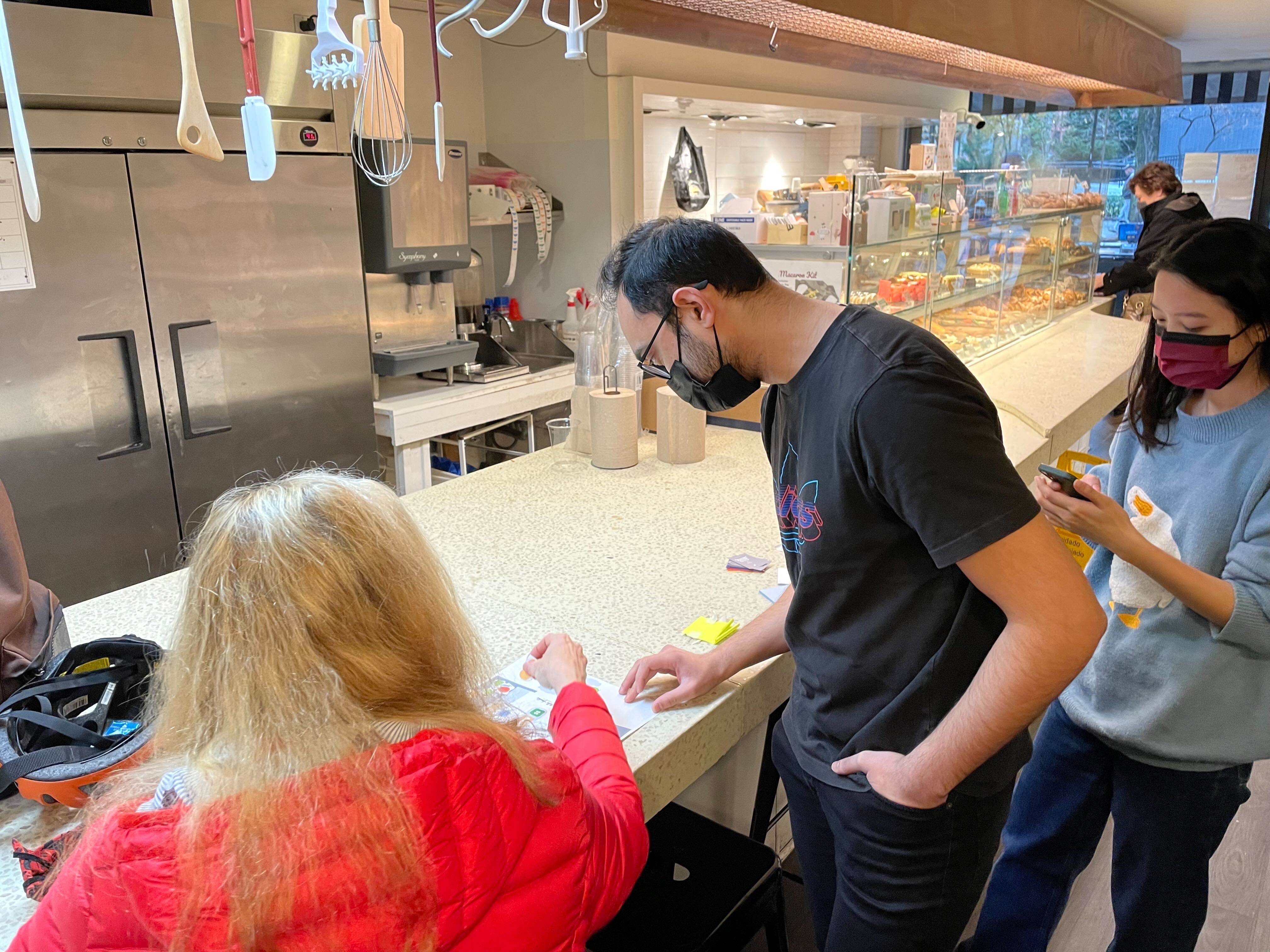
.jpg)